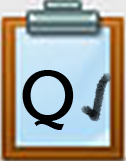Q4 STEAM Roller Coaster: Simulation
INTERACTIVE ROLLER COASTER SIMULATIONS
Step 1. Watch the introduction in the simulations below and then select the arrow and text to GO TO SIM and in the following simulation lets you change some of the elements to test your design knowledge.
Note: The CK12 site may require you to sign-in using a Google or Microsoft account. The content is free to use.
Step 2. Click the link below for the virtual activity
Step 3. Loop the Loop Challenge. Will your coaster fall off on the loop or have enough force to make it through the loop and get to the end safely?
 Select the link below for this coaster challenge
Select the link below for this coaster challenge
Link to the app: CK12 site URL
ASK YOURSELF
When you have finished your coaster activity, ASK yourselves the following and write it up in your note-taking document:
How did the six elements you had to consider impact the success of your coaster?
Describe the effects of potential and kinetic energy in successful and unsuccessful coaster design attempts.
Describe how the simulation helped you learn about potential and kinetic energy.
Note: Use spell and grammar check on your document, and include an image of your best coaster.
Check with your teacher on how to turn in your:
- Note-taking document
- Drawing
- Coaster Testing document
Competencies & Standards
MITECS Michigan Integrated Technology Competencies for Students, and
3. Knowledge Constructor
c. Curate information from digital resources using a variety of tools and methods
4. Innovative Designer
a. Know and use a deliberate design process for generating ideas, testing theories, creating innovative artifacts or solving authentic problems
b. Select and use digital tools to plan and manage a design process that considers design constraints and calculated risks
c. Develop, test and refine prototypes as part of a cyclical design process
d. Exhibit a tolerance for ambiguity, perseverance and the capacity to work with open-ended problems
5. Computational Thinker
b. Collect data or identify relevant data sets
Websites and Documents
Websites
- Amusement Parks Physics
- ck-12 Physics Simulations
- Dad Builds Roller Coaster
- Design a Roller Coaster
- Five-step Engineering Process
- How Roller Coasters Work
- How Stuff Works - Roller Coasters
Videos From Outside Sources
- Dad Builds Backyard Roller Coaster YouTube
- How Can a Roller Coaster go Upside Down without Falling? PBS Kids Video
- I Built a Huge Roller Coaster Floor to Ceiling YouTube
21t4s Videos
- None
21t4s Documents & Quizzes





